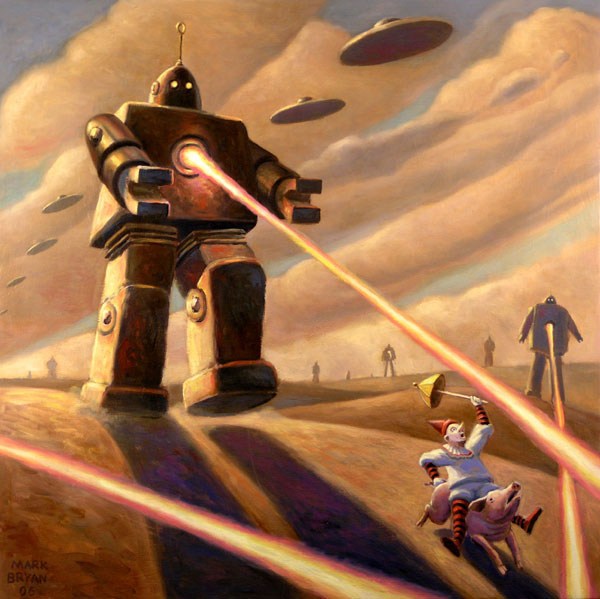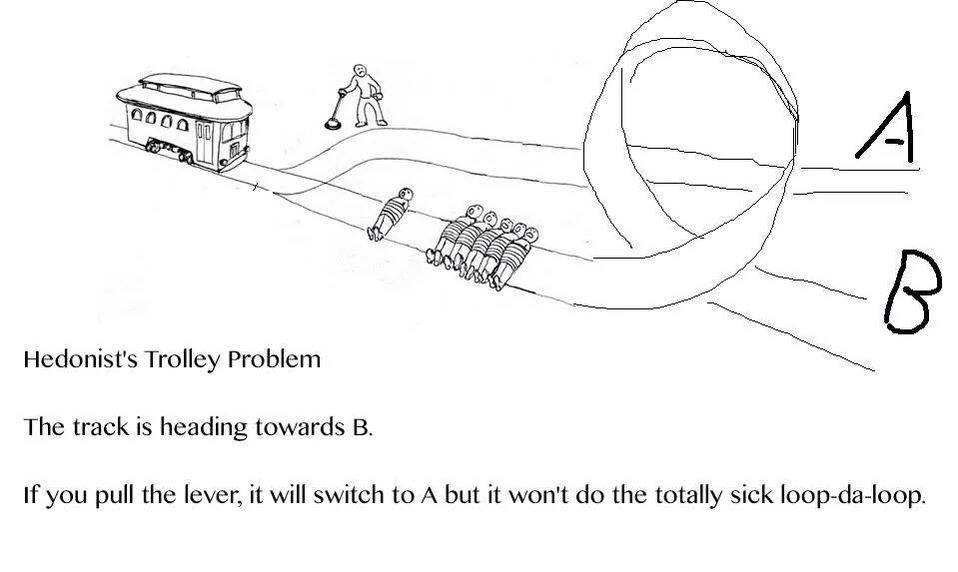[This is something I wrote before I had this blog, but I really like it and hope the readers here will find it interesting.]
The task of explaining Aristotle’s theory of place lies in the interpretation of this sentence: “Hence the place of a thing is the innermost motionless boundary of what contains it,” (Physics IV 212a20). Now the idea of a motionless boundary for perceptible and obviously movable objects seems impossibly counterintuitive. However, using Aristotle’s comments into the nature of place, we can understand how this theory extends beyond a simple boundary theory and into the modern era.
His discussion is started by making an observation:
The existence of place is held to be obvious from the fact of mutual replacement. Where water now is, there in turn, when water has gone out as from a vessel, air is present; and at another time another body occupies this same place. The place is thought to be different from all other bodies which come to be in it and replace one another. What now contains air formerly contained water, so that clearly the place or space into which and out of which they passed was something different from both. (Physics IV 208b1-8)
Aristotle then makes some tentative moves into defining what could possibly fulfill the role of place. First he discounts any idea that place could “be body; for if it were” he says, “there would be two bodies in the same place,” (209a6) and shows how this causes untold amounts of theoretical difficulty (ibid.). Then he discusses how, as that which “primarily contains each body” (209b1), place could be viewed as the form or the matter. Again he discounts either of these possibilities by noting that neither of them can be separated from a thing, whereas place may be.
The analysis turns at this point asking, “How many ways one thing is said to be in another,” (210a14) in the hopes of landing upon a useful interpretation of the notion of being-in. Aristotle entertains the idea that a thing may be in itself, or more specifically, in itself “qua itself or qua something else” (210a27). He gives the example of a jar of wine being in itself in virtue of the whole’s description in terms of its parts: the jar of wine is not reducible to a jar or some wine, but to their specific combination. Hence that which is a subject may potentially be a container as well, as the jar is the container of the subject ‘jar of wine’. However, he says this is impossible as no object is actually like this: the wine would have to be an equal part container, and the jar an equal part wine, else the whole of the ‘jar of wine’ will not be completely in itself. It is in virtue of being different that the jar and the wine may come together, and hence he concludes that, “since the vessel is no part of what is in it (what contains something primarily is different from what is contained), place could not be either the matter or the form of the thing contained,” (210b27).
Aristotle then considers two sorts of boundary theories. First, place is such that it is “some sort of extension between the extremities,” (211b7). However, this sort of boundary exists independently of what is bounded and is permanent. Insofar as anything moves, the place will change, and there will be two problems generated: 1. The boundary between, for example, the wine and air moving in a jar will be exactly coincident with the boundary between the air and wine, and each of these two boundary extensions will be partially coincident but must also be unique, and 2. There will be a place at the boundary of the displaced place, and so an infinite regress of places associated with previous places will be generated.
Finally Aristotle says, “place necessarily is… the boundary of the containing body at which it is in contact with the contained body,” (212a6). Then, interestingly, he says, “Place… is rather what is motionless,” (212a17) and then, “Hence the place of a thing is the innermost motionless boundary of what contains it,” (212a20). So how are we to make sense of containers that give us the boundaries but also do not move?
If we take our interpretation directly from the previous discussion of boundary, Aristotle seems to have made an awfully strange claim: place is a like a container that something perfectly fits in, and yet that container cannot itself move although what is contained therein necessarily can. However, I would like to suggest taking him at his word in regards to place being necessarily a boundary. It is necessarily a boundary of the containing body which is in contact with the contained body, but it is not sufficient that it be the boundary that most have in mind. What has been missed by regarding the boundary as necessary and sufficient is the incorporation of Aristotle’s primary intuition into how we know place exists.
For us to notice any motion we need something stationary relative to the thing moving such that we may observe the motion as motion. A stationary backdrop is necessary to view change. Consider this example: it is a common experience to be sitting in traffic next to a bus. When the bus starts to slowly pull forward sometimes it is possible to get the sensation that you have started to move backwards. This sensation lasts until some other fact informs you that it was not you who were retreating, but the bus advancing. In the first instance, the place that you inhabited was defined in terms of a stationary bus: any motion that occurred was relative to that fixed point. When you realized it was the bus, and not you, that was moving, whatever it was that informed you that you were stationary became incorporated into the place. Perhaps you saw a building and since it was not moving your senses of place and motion were reevaluated to accommodate this new information. Hence two different places were involved in this scenario: one corresponds to your (belief of) moving backwards and the other to the forward motion of the bus. The first place has the innermost motionless boundary [illegitimately] defined in terms of the bus [since the bus was in motion], and the second has an expanded sense of place to include something motionless relative to both you and the bus. Place, therefore, not only encapsulates that which is moving, but also whatever is observing the motion and an independently stationary object.
When Aristotle says, “First then we must understand that place would not have been inquired into, if there had not been motion with respect to place,” (211a12) he was not making an idle comment on the ‘discovery’ of the phenomenon of place. Instead, he was beginning his analysis with the most important feature to be explained. Galilean relativity holds fundamentally that motion can only be defined relative to some “system of coordinates” (Einstein p. 14), i.e. something motionless with respect to the moving object. Although Aristotle did not have the benefit of Descartes’ mathematical works he still recognized the need for a reference system unique to each motion.
Now that the meaning of the ‘motionless’ criterion has been explained, what does ‘innermost’ mean if the boundary may include objects at a significant distance from the one we are describing? The Earth is, in some sense, the place of all sublunary objects, but it is surely not the innermost boundary. Again appealing to the exact phenomenon that Aristotle was dealing with yields the correct explanation: the motion of an object with respect to its place cannot be described by saying that the place of the thing is Earth. Instead the innermost boundary should be the first boundary for which the description of motion and place of the thing make sense. In the example of swirling wine in a jar (with the jar held steady but the wine still moving), the place of the wine can be said to be the jar because it describes the closest motionless boundary. One might say that the place of the wine is equally on the table, or in someone’s hand, but both of these descriptions are related to motion other than that of wine swirling in the jar, and are really just shorthand for ‘the jar of wine is on the table, or in hand’ (consider, “The wine is on the floor,”: no swirling to be had). The correct place of the moving bus example was the street, which could reasonably include things such as houses and other stationary objects, the most important one being the road. Aristotle gives the ancient version of this, just before his final definition of place, in terms of the motion of a boat, such that it must be defined in terms of the whole river, which is taken as stationary (212a19).
One may think that I am being too charitable to Aristotle at this point because it may look that I have implied that the ‘innermost’ criterion of the theory will do all the work of translation between coordinate systems, which it does not seem to do. However, Aristotle allows for the fact that we may treat a vessel such as a boat as a “transportable place” (212a14). Hence we may allow for the things within a boat to have motion independent of a preferred fixed reference system. This connection drawn between vessel and place gives the final aspect needed for a true relativity theory. Historically the example of a boat on a river (212a19) is striking because Galileo uses the same example of a ship in his Dialogue Concerning the Two Chief World Systems (Salgado).
Commentary
Historically Aristotle’s theory of place has been treated as a simple boundary theory coupled with a few very strange statements that were assumed to be preliminary investigations into different methods of solving blatant paradoxes (King 91). My suspicion for why this happened is twofold. First, philosophy of place sounds like the most dry and uninteresting subject possible and hence it was not given its due study time over the course of history (after Aristotle that is). Secondly, the modern formulation of relativity is given according to Einstein’s theory of Special Relativity. Insofar as this is a theory of relative motion, it is easy to overlook the fact that it applies to objects without motion, things in place. Aristotle’s formulation is none the weaker because of the way he cast his theory, but it is much more obscure to the modern reader, as Aristotle’s relativity is developed in a somewhat inverse way with respect to modern relativity.
Bibliography
- Barnes, J. ed. The Complete Works of Aristotle v.2, Princeton U. Press, Princeton 1995
- Einstein, Albert Relativity: The Special and General Theory Lawson trans. Pi press, NY, NY 2005
- King, H. R., “Aristotle’s Theory of TOPOS,” Classical Quarterly #44 1950, pp. 76-96
- Salgado, Rob “Galileo’s Parable of the Ship” http://physics.syr.edu/courses/modules/LIGHTCONE/galileo.html Accessed 2/24/06 (Link Dead) Archive.org backup, Accessed 16 December 2015.


